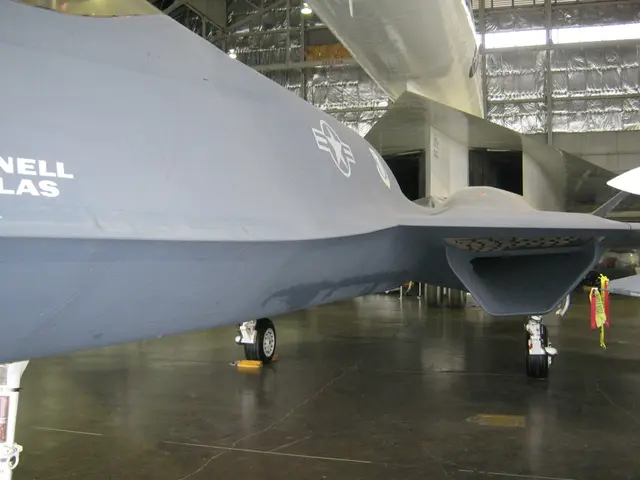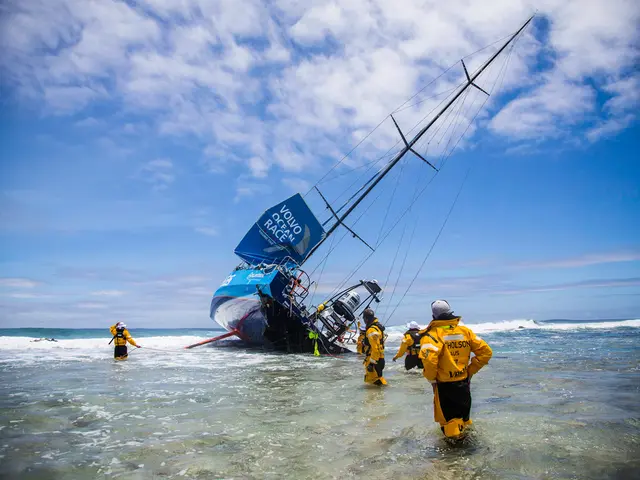Soaring the Depths: Unraveling Germany's Deep Strike Capabilities with Eurofighters
Luftwaffe Conducts Precision Deep Strike Drills with Guided Glide Bombs
Germany's Eurofighters are no strangers to long-range operations, as showcased by their recent foray into the realm of 'Deep Strikes'. To delve deeper into this topic, we'll discuss the essence of Deep Strike missions, the intricacies of Eurofighter capabilities, and their role in NATO's strategic landscape.
Deep Strike Missions: A Brief Overview
Deep Strike missions involve engaging distant targets and returning to the home base on the same day. This tactic requires precision, flexibility, and an unyielding commitment to long-range operations, as exemplified by the recent German Air Force training exercise.
Eurofighter Capabilities: Range and Refueling
The Eurofighter Typhoon, while primarily a multi-role combat aircraft, is not inherently equipped with long-range missile capabilities. However, it can be adaptable, allowing for the installation of various missiles suited to different missions.
Crucial to the Eurofighter's long-range performance is its in-flight refueling capability. This feature enables the aircraft to extend its range and maintain a persisting presence over distant regions, thus empowering it to execute deep strike missions effectively.
Military Implications in NATO Operations
NATO's augmentation of deep strike capabilities—as demonstrated by the UK-Germany joint project for a "deep precision strike" missile with a range exceeding 2,000 km—enhances the alliance's deterrence and response capabilities across the European front. Germany's involvement in such strategic projects underscores its dedication to strengthening NATO's defensive posture, particularly along the Eastern Flank.
The Eurofighters' role within NATO transcends deep strike missions, encompassing air defense and quick reaction alert (QRA) duties, ensuring the security of NATO airspace. Future developments, such as the integration of advanced missiles like the Joint Strike Missile (JSM) into German F-35s, further augment Germany's capacity to execute stealthy and precise strikes, bolstering its contribution to NATO operations.
Though the Eurofighter Typhoon might not stand out as a star performer in the realm of deep strike capabilities, Germany's commitment to developing sophisticated missile systems and actively participating in deep strike training exercises speaks volumes about its role in fortifying NATO's defense capabilities. The alliance's continued development of long-range missiles and integration of advanced weaponry will likely maintain Germany's strategic edge in protecting the security of its lands and allies.
The Community policy should emphasize Germany's commitment to investing in advanced military technology, as demonstrated by its engagement in Deep Strike missions with the Eurofighter Typhoon. This investment extends not only to the aircraft itself but also to the development of long-range missiles for employment in such missions.
The employment policy could outline strategies for collaborating with industries such as aerospace and finance to fund and develop these advanced military technologies, ensuring Germany's robust participation in NATO operations and maintaining its defensive posture, particularly along the Eastern Flank.








